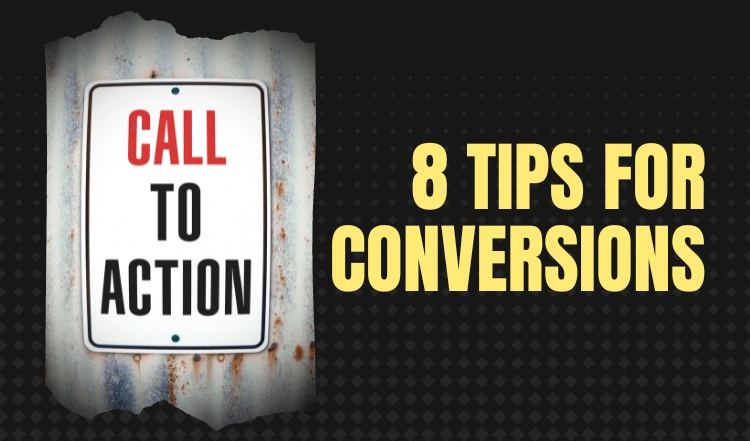As a content creator, you know the importance of creating compelling calls to action that convert. After all, your goal is to get your readers to act, whether signing up for your newsletter, downloading your e-book, or making a purchase. But what makes for a genuinely compelling call to action?
Here are eight tips to help you craft calls to action that convert:
Keep it Simple
Your call-to-action should be clear and concise. Don’t try to pack too much into it. Instead, focus on one key message you want your reader to take away. This way, they are more likely to remember what you want them to do. If they must go back or recall the point, they will likely become disinterested.
Make it Relevant
Your calls to action need to be relevant to the content of your article or blog post. If it’s not, your readers are likely to be confused and may not take the action you want them to.
For example, use your CTA to guide your potential customer or subscriber to the next step in your funnel.
If you’re offering a great checklist for download, make sure the CTA explains that clearly. Always avoid generic call to actions. After all, we’re all desensitized to “Download” or “Sign Up” or “Subscribe” buttons. Include the value in your CTA, such as, “Snag The Checklist And Win Back 4 Hours Of Your Day“.
Use Strong Language
Your call to action should use strong, persuasive language that urges your reader to act.
Words like “free”, “now”, and “instant” can be particularly effective in driving conversions.
But don’t shy away from incorporating some more powerful word choices. Be bold and take a stand! Use words like “complete” and “massive”. Let your visitor know that you’re providing an incredible value.
Offer an Incentive
Giving your readers an incentive to act can be a powerful motivator. Whether it’s a discount code or a freebie, offering something of value will increase the likelihood that they’ll follow through on your call to action.
This is typically where a lead magnet can make or break your potential sale. Offer up a strong piece of content to prove your expertise and value before asking for the sale.
Once your new lead sees what incredible information you’re willing to give away for free, you can tease your higher priced knowledge. In this way, you’re essentially pitching your product to a pre-warmed audience that already has trust in you.
Use Imagery or Video
Including an image along with your call to action can help it stand out and be more effective. Use an eye-catching image that supports your message and entices your reader to take action. Remember, we’re all visual first and foremost. We may not read most words on a screen these days, but we do catch imagery, and we use the visuals to decide whether something is worth our time.
Now, if you’re interested in going beyond strong images to get your point across, you can upgrade to video. A short few second video (can be transformed into an animated GIF or meme), can often skyrocket conversions up to 60%. Simply put, moving imagery catches our attention better than anything these days.
Make it Easy to Take Action
Your call to action should be easy to follow and lead your reader to the desired destination without any confusion. Ensure your links are working, and that roadblocks do not prevent your reader from following through.
Test, Test, Test
Finally, don’t forget to test your call to action to see what works best. Create different ones to see which one converts the best. Then, you can fine-tune your call to action for even better results.
A/B split testing is a great way to determine what works best for your audience.
And don’t shy away from asking your family and friends to take a look at a few options and give their opinions. You’d be surprised how valuable a third party can prove to be when you’re testing various pitches.
Use Direct Language
A call-to-action is short, authoritative, and doesn’t leave anything up to the imagination. You’re not asking for an opinion. You’re making a big, bold statement that you can back up!
You’re saying, loudly, that you know your product or service is exactly what they need, and they would be a fool to pass it up. Now, obviously, we don’t call our potential customers or subscribers fools, but we do write our CTA using an active voice.
Avoid using a passive voice.
To learn more about the differences of an active versus passive voice, particularly in content writing, here’s a great article from Google Developers on that exact topic.
Remember, crafting a compelling call to action is essential to driving conversions. Crafting ones that convert is also easy with the correct information and tools. Keep CTAs in mind the next time you’re creating content and see the difference it makes in your results.
Remember, crafting a compelling call to action is essential to driving conversions. Crafting ones that convert is also easy with the correct information and tools. Keep CTAs in mind the next time you’re creating content and see the difference it makes in your results.





